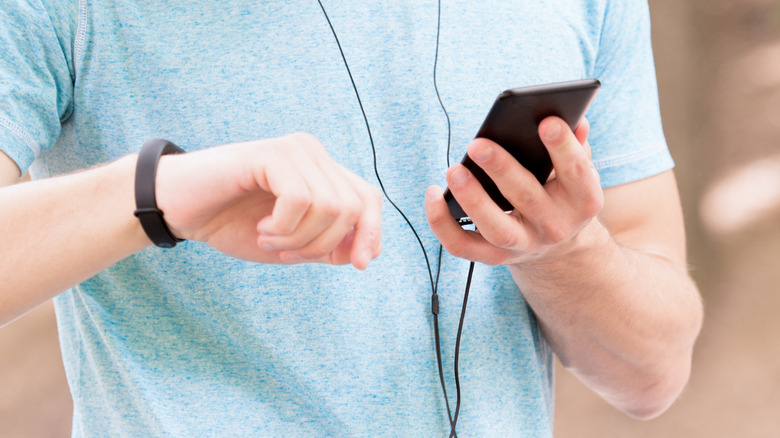
Just dance/Shutterstock
By Rob Rich/
Fitbits are a fairly well known brand of fitness tracker, and many of them are loaded with useful features and other secrets. Unfortunately, just like pretty much every other physical object in existence, they can and will run into problems over time.
As comparably simple as a Fitbit might be to something a little more complex, like a full-on smartwatch, it’s still crammed full of sensors and other instruments that can occasionally act up. Internal software can glitch out, outdated firmware can cause some functions to stop working right (or at all), etc.
While there will be some situations where you’ll want to get in touch with a customer service representative or source a replacement, there’s no need to do so right away. The most common issues you’re likely to encounter when using a Fitbit are almost always something you can take care of on your own with a little bit of patience, some knowhow, and occasionally some supplies you’re likely to have at home already.
Won’t turn on
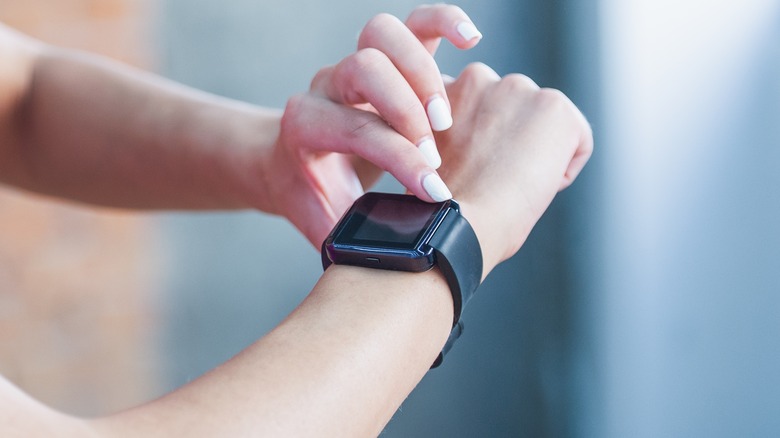
George Rudy/Shutterstock
There are a few possible reasons for a Fitbit not turning on, but the simplest and most likely cause is that it’s out of juice. Like most electronics, if it doesn’t have any battery power left it’s not going to do anything — not even give you a warning.
If the problem is just that it’s out of power, all you have to do is recharge it. The process of connecting the charging cable may differ slightly based on the model of Fitbit you have (some plug in while others magnetically attach to the back), but you should be able to turn it on and use it normally again once it’s finished charging. However, you may want to use a wall adapter and plug it directly into an outlet to make sure the Fitbit is getting enough power.
You’ll also want to make sure the Fitbit charges properly and up to 100 percent. Keep an eye on the battery indicator — which, again, differs from model to model but will show something like a typical battery icon or a sequential line of lights — and hold off on unplugging from the charger until it’s full. This is also a good way to check that the Fitbit is capable of charging in the first place, which is a sign of a whole other problem. If successful charging doesn’t work, consider contacting support.
Won’t charge
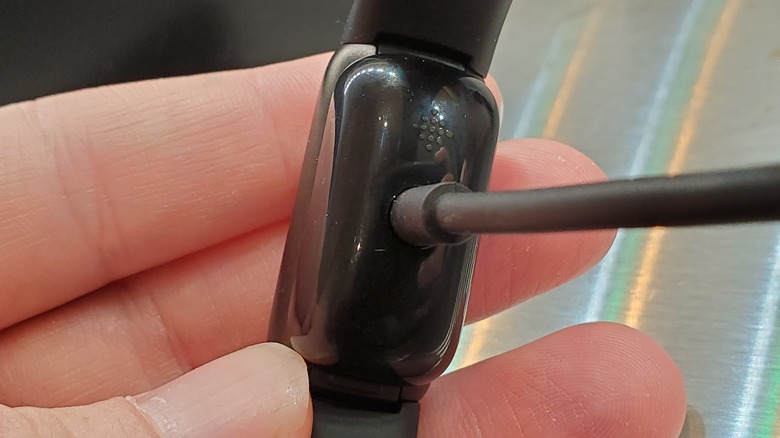
Gado/Getty Images
Another thing that can happen with many kinds of electronics is charging trouble. For a Fitbit, this could mean lackluster charging capabilities or straight-up not charging at all.
While it’s not impossible for a misbehaving battery to need a replacement, it’s more probable that you just need to perform some basic cleaning. Using a clean toothbrush (and not one you or anyone else uses to clean their teeth) and a little bit of fresh water, gently scrub along the metal contacts on the back of the Fitbit. Once clean the contacts should have either a bronze or golden color to them.
Cleaning the pins on the charging cable is a little more delicate. Put rubbing alcohol on a cotton swab, then carefully run the alcohol side of the swab along the metal contacts. Pay close attention to the pins once you finish to make sure no cotton bits were left behind — and if so, delicately remove them. Also, do not attempt to charge the Fitbit while the contacts are still wet (though you can dry them off with a tissue).
Other battery shenanigans
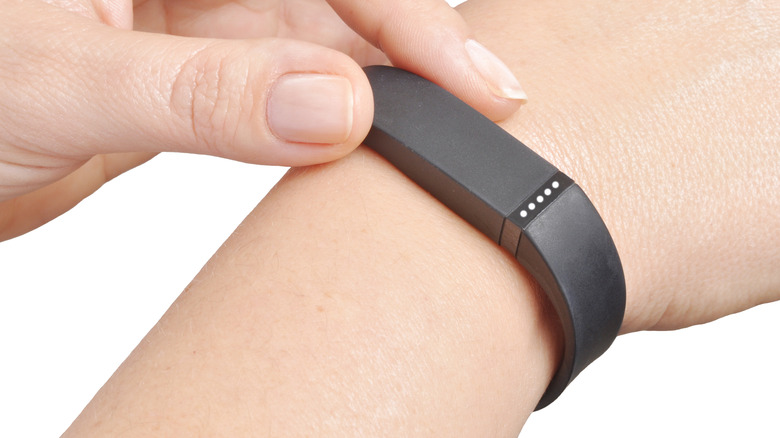
Stephen VanHorn/Shutterstock
Losing power quickly can also be caused by dirty contacts but is more likely due to the software. Try restarting your Fitbit, and if that doesn’t work check for a firmware update.
- Open the Fitbit app (be sure your device is near the Fitbit you want to check) and select the Today tab.
- Choose Devices and select the image of your Fitbit.
- If an update is available you’ll see an Update button. Tap it to begin the update.
- Follow the on-screen instructions and other prompts.
- Check the Fitbit for an update progress bar and check in on it intermittently until the update is finished.
- Keep your device with the Fitbit app (computer, phone, or tablet) close to the Fitbit you’re updating until the process is complete.
Another possible cause for excessive battery drain is equally excessive use, however there are lots of settings Google recommends adjusting that should extend the battery life. Try turning down the screen brightness or shutting off the function that makes the screen turn on when you raise your wrist. Avoid using the always-on display option (if your model has one). Even the clock face could be an unexpected battery hog, so try using a different one for a few days to see if that makes a difference.
Updates aren’t working
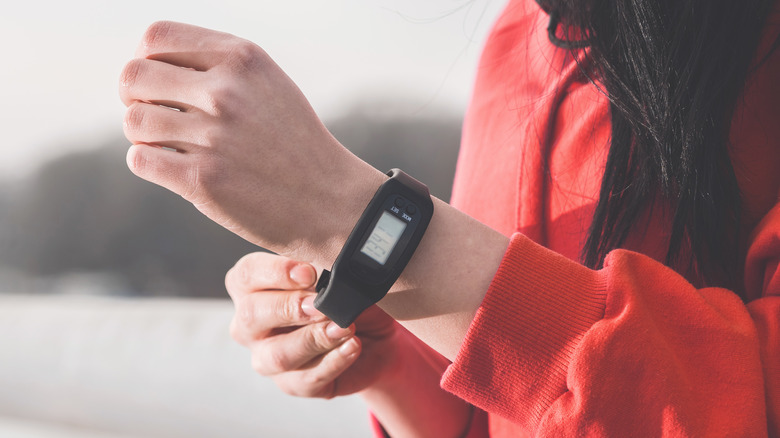
Focus and Blur/Shutterstock
A Fitbit that won’t update can be a big problem — especially if you’re trying to update it to troubleshoot a completely different issue. Thankfully, in most instances, this should be an easy fix.
- Make sure your Fitbit is adequately charged (more than 50 percent) before updating as low battery power could cause problems. Also, plug the Fitbit into its charger before attempting to update.
- Double-check whether the Wi-Fi network your Fitbit is connected to is working, and keep the Fitbit close enough to the router to maintain a strong signal.
- If you’re updating via Bluetooth, disconnect other Fitbit devices from your phone as they could cause confusion or interruptions.
- If updates are failing over Wi-Fi, restart the Fitbit and then unpair and re-pair it with your phone. You may also need to restart your phone.
- If updates are failing over Bluetooth, turn the Bluetooth function off and back on again on your phone, then restart the Fitbit.
You may also need to remove the Fitbit from your account by opening the app and selecting the Today tab, then opening Devices, selecting the device, and then choosing to remove it. After that, add the Fitbit back to your account by going back to the Devices menu, selecting Set Up a Device, then following the on-screen instructions.
Not syncing

George Rudy/Shutterstock
When a Fitbit stops syncing you’re likely going to notice that notifications aren’t making it through or other data isn’t being transferred between devices. When that happens you can double-check for syncing by opening the Fitbit app and selecting the Today tab, then pressing and holding the screen and pulling down. This should force the app to re-sync with the Fitbit, but if not:
- Close the Fitbit app completely — this process differs between iOS and Android.
- Go into your phone’s Settings and turn the Bluetooth function off and back on again.
- Re-open the Fitbit app and attempt to re-sync. If it still doesn’t work, restart your Fitbit and try again.
- Make sure the Fitbit and the device it’s synced with are both updated to their latest versions and double-check the strength and connections with Wi-Fi or Bluetooth.
- If the problem persists on the iPhone, restart the iPhone.
- Open Settings and select Bluetooth, then tap the Info (i) icon next to the Fitbit’s name and choose to Forget This Device.
- Open the Fitbit app, reconnect to the Fitbit, then repair it.
- For Android, double-check your Settings to make sure the Fitbit app has been granted the necessary permissions.
- Restart your phone, then uninstall the Fitbit app and reinstall it again.
Regardless of your smartphone model, you also may want to temporarily turn off or disconnect any other paired Fitbit devices as their signals could be contributing to the syncing problem.
Issues with health tracking

Satyrenko/Shutterstock
Health tracking oddities can appear in a variety of forms and be caused by a number of things. In many cases, something as simple as a restart, a cleaning, making sure all the necessary devices are updated, or resyncing is all you need to do — see above. Otherwise:
- Double-check the Fitbit app for any new updates, and download them if available.
- Make sure the Fitbit fits snugly around your wrist (or arm, depending on the device) — but not too tight or too loose.
- Disconnect third-party fitness tracking services if your walking or running metrics are off as they could be causing tracking conflicts.
- If the Fitbit tries to keep tracking your vitals after you remove it, place it face down so that the sensors are pointed up and not in contact with any surfaces. This should cause it to stop once it realizes it can’t read anything.
It’s also a good idea to make sure your personal health information is up-to-date. Open the Fitbit app and tap on your profile icon, then choose Personal and update your account with any relevant details (height, weight, etc).